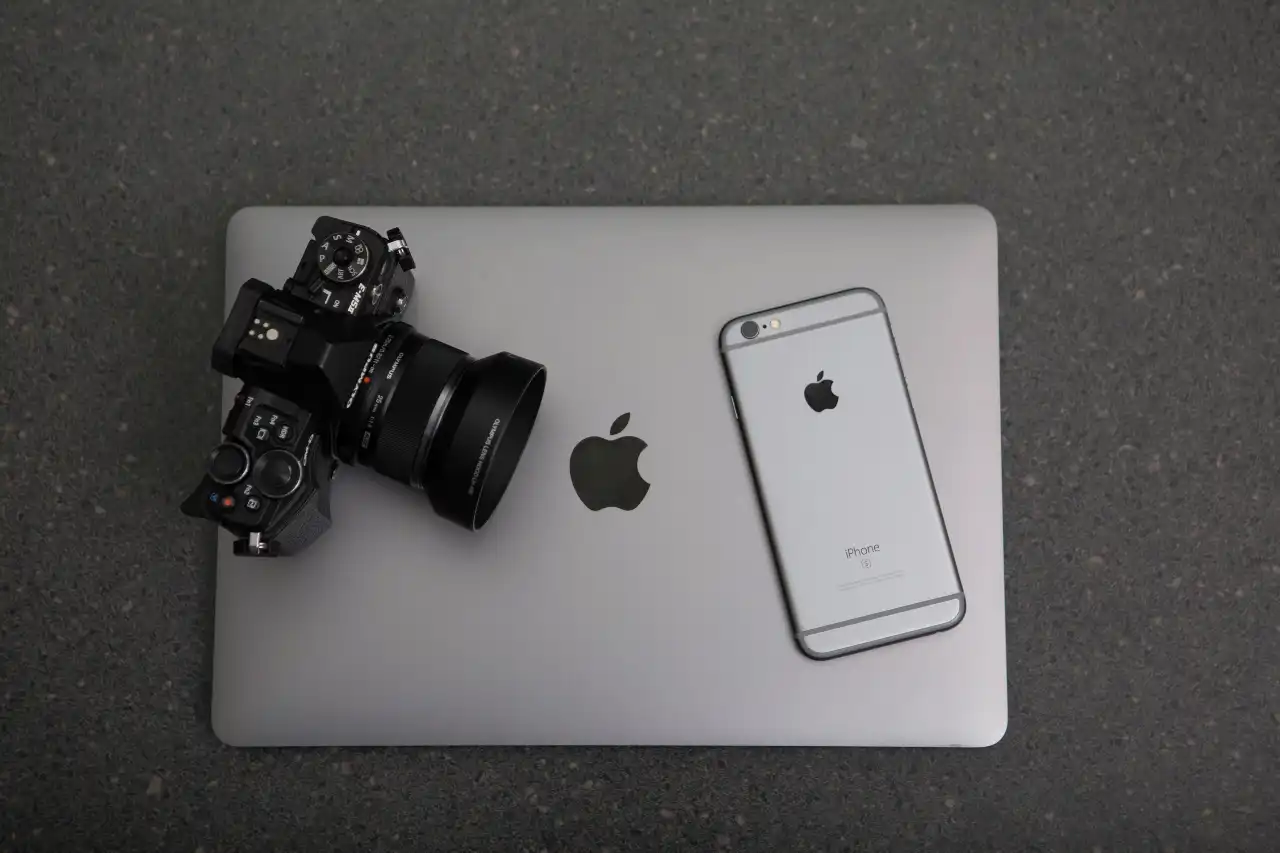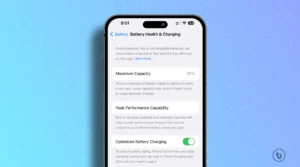Introduction to iPhone Photography
The realm of photography has undergone a significant transformation over the past two decades, primarily driven by advancements in technology. Among these developments, the evolution of smartphone cameras stands out, particularly those found within iPhones. Initially, mobile cameras offered rudimentary features that paled in comparison to their standalone counterparts. However, Apple’s commitment to enhancing their photographic capabilities has led to the production of devices equipped with cutting-edge lenses, high-resolution sensors, and sophisticated processing algorithms. Today, iPhones are recognized for their remarkable ability to capture stunning images that rival traditional cameras.
The increasing popularity of iPhone photography can be attributed to several factors. First and foremost, the convenience of having a powerful camera readily available at all times significantly lowers the barrier to entry for aspiring photographers. The iPhone’s compact size allows individuals to carry it effortlessly, making it easy to capture spontaneous moments. Additionally, the user-friendly interface and built-in editing tools empower users to enhance their photographs with minimal effort. This combination of accessibility and functionality has fostered a vibrant community of photographers, ranging from enthusiastic amateurs to seasoned professionals who utilize iPhones as a key component of their artistic toolkit.
Furthermore, the versatility of iPhone photography extends beyond casual snapshots. With an array of applications designed for image enhancement and manipulation, users can explore creative avenues that were once exclusive to experienced photographers. The capabilities of features such as Portrait mode and Night mode exemplify how iPhones provide tools to achieve professional-quality results. As users become more acquainted with their devices, they can easily experiment with composition, lighting, and editing techniques. In this blog post, readers will discover a collection of tips and tricks that will enable them to master iPhone photography, allowing them to unlock their potential and produce stunning visual content with their devices.
Understanding Your iPhone Camera Settings
To fully harness the potential of your iPhone for photography, a solid understanding of its various camera settings is essential. The iPhone is equipped with multiple features that can significantly enhance your photography, allowing you to capture stunning images in different environments and conditions. One of the most noteworthy settings is the High Dynamic Range (HDR) option, which is designed to balance the light in a scene. By combining multiple exposures, HDR ensures that both the bright and dark elements in your photos are well-defined. Activating HDR is simple; just tap the HDR icon when preparing to take a picture, and consider using it for landscapes or high-contrast scenes.
Another powerful feature is Night Mode, which aids in capturing clear and detailed photos in low-light settings. When the iPhone detects insufficient light, it automatically engages Night Mode, allowing for longer exposure times while minimizing motion blur. This is particularly beneficial for nighttime photography or dimly lit environments. It’s important to keep the device steady during the shot for optimal results, ensuring clarity and color accuracy.
The iPhone also provides different shooting formats, such as Live Photos and Portrait mode. Live Photos captures a few seconds of video alongside your photo, creating a dynamic memory that encapsulates moments in action. Portrait mode, on the other hand, emphasizes the subject by blurring the background, mimicking professional photography techniques known as bokeh. To access these features, simply open the Camera app, swipe through the various options situated at the bottom of the screen, and select your desired mode. By exploring and adjusting these settings according to your specific needs, you can elevate your iPhone photography dramatically.
The Importance of Lighting in Photography
Lighting is undeniably one of the most critical elements in photography. It can dramatically affect the mood, clarity, and emotional impact of an image. Understanding the various types of natural and artificial lighting is essential for any iPhone photographer aiming to elevate their craft. The quality of light influences how colors are perceived and can either enhance or detract from the subject being captured.
Natural light can be harnessed to create stunning photographs, particularly during the ‘golden hours’—shortly after sunrise and before sunset—when the sunlight is soft and diffusive. This type of lighting often casts warm tones, giving images a higher aesthetic value. To make the most of natural light, photographers should pay attention to their surroundings and consider the time of day. Avoiding harsh midday sun can help prevent unflattering shadows and highlights, which can disrupt the overall quality of the photo.
When natural light conditions are less than ideal, external lighting can be employed to achieve desired effects. Reflectors can be used to bounce light onto the subject, brightening up shadowed areas without introducing harshness. Another option is to utilize artificial lights, such as LED panels or simple lamps. When shooting indoors or during nighttime, these tools can help illuminate the subject, producing clean, crisp images even in low-light situations. Additionally, understanding the color temperature of artificial sources ensures that skin tones remain natural and consistent.
To conclude, mastering the use of lighting is paramount for anyone looking to improve their photography skills. Whether utilizing the beauty of natural sources or incorporating artificial elements, being mindful of how light interacts with your subject can significantly enhance your photographs. By applying these principles, iPhone photographers can achieve stunning, professional-looking images that stand out in the competitive world of photography.
Framing and Composition Techniques
Mastering the art of framing and composition is crucial for enhancing the quality of your iPhone photography. One essential technique to consider is the rule of thirds. This method involves dividing your image into three equal parts both horizontally and vertically, creating a grid of nine squares. By positioning your subject along these lines or at their intersections, you can achieve a more balanced and engaging photograph. This compositional method not only draws the viewer’s eye towards the intended focal point but also adds a sense of harmony to the overall image.
Another effective technique is utilizing leading lines. This approach guides the viewer’s gaze throughout the photograph, creating depth and perspective. Natural lines found in your surroundings, such as roads, pathways, or fences, can effectively lead to your subject, enhancing the visual storytelling of your image. When shooting with an iPhone, aim to incorporate these lines strategically to draw attention and create a dynamic composition.
Additionally, consider the use of framing. In photography, framing refers to incorporating elements within the scene that frame your subject. This can be achieved with architecture, trees, or any foreground object that can create a border around your subject. By doing this, the framed subject becomes more pronounced, offering context and dimension to the photograph, which often results in the image feeling well-composed and intentional.
Experimenting with these techniques can yield diverse and stunning results. By integrating the rule of thirds, leading lines, and framing into your photographic practice, you will effectively refine the composition of your shots. Engaging with these methods will not only enhance the aesthetic appeal of your images but also elevate your overall photography skills, allowing for more creative expression and storytelling through your work.
Utilizing Editing Apps for Enhanced Photos
The advancement of mobile photography has given rise to a plethora of editing applications that significantly improve the quality of photos captured on an iPhone. These editing apps are designed to offer users a range of tools and features that allow them to transform their images, making them look more professional and visually appealing. Among the most popular options are Adobe Lightroom, Snapseed, and VSCO, each catering to different editing needs and preferences.
Adobe Lightroom is known for its powerful editing capabilities, allowing users to make detailed adjustments to exposure, color balance, and sharpness. It also includes various presets that can be applied quickly, making it suitable for users who desire both simplicity and depth in their editing. The app supports advanced features like selective adjustments and profiles for different camera models, which are particularly beneficial for serious photographers looking to refine their work.
Snapseed, developed by Google, is another robust option that combines simplicity with a wide range of editing tools. Its user-friendly interface allows for easy navigation through its features, such as cropping, straightening, and adjusting brightness. One of the standout features of Snapseed is its healing tool, which can remove unwanted objects from images seamlessly. Furthermore, Snapseed offers a diverse collection of filters and textures, enabling creative experimentation.
VSCO, often favored for its social media integration, provides users with high-quality presets that emulate film looks. The app encourages a community aspect where users can share their creations and receive feedback. VSCO also permits image adjustments similar to its counterparts, supporting exposure corrections, contrast enhancements, and saturation tweaks. Engaging with these apps will undoubtedly elevate your photography skills by allowing for thoughtful editing and creative expression.
Incorporating these editing platforms into your mobile photography routine can dramatically enhance your images. Techniques like cropping to improve composition, adjusting exposure for optimal lighting, and applying aesthetically pleasing filters create a cohesive look that draws the viewer’s eye. By mastering the functionalities of these apps, iPhone users can elevate their photography to new heights.
Exploring Different Photography Styles
Embracing the versatility of an iPhone opens up a world of photography styles, making it an excellent tool for both amateur and professional photographers. Four prominent styles that can be effectively captured using an iPhone are portrait, landscape, street, and macro photography. Each style demands different techniques, settings, and creative approaches.
Starting with portrait photography, this style focuses on capturing the essence of individuals. The iPhone’s Portrait mode is designed to enhance subjects without losing background details. To achieve stunning portraits, it’s advisable to use natural light and select a suitable aperture for a soft bokeh effect, which isolates the subject. You can also experiment with angles and poses to convey personality and emotion.
Landscape photography, on the other hand, showcases the grandeur of nature and cityscapes. With the iPhone’s wide-angle lens, capturing expansive views becomes straightforward. Opt for the golden hours—early morning or late afternoon—when the light is softer and shadows are longer. Utilizing the rule of thirds can enhance composition, encouraging a balanced and engaging photograph.
Street photography often thrives on spontaneity and candid moments in public settings. The compact size of the iPhone allows for discreet shooting, capturing the authenticity of life as it unfolds. Ensure to adjust the exposure and focus settings accordingly to adapt to changing light conditions, allowing for dynamic captures that tell a story.
Finally, macro photography invites photographers to explore the intricate details of smaller subjects. Using an external lens attachment can significantly enhance the iPhone’s ability to capture minute details with clarity. Approach subjects such as flowers and insects closely, ensuring a stable hold to avoid blurriness while focusing on texture and color.
By mastering these photography styles, iPhone users can elevate their skills and creativity, transforming everyday scenes into stunning visual narratives.
Common Mistakes to Avoid in iPhone Photography
While iPhone photography offers incredible potential for capturing stunning images, there are several common mistakes that can hinder the quality of your photographs. One of the most prevalent issues is poor focus. Many users often neglect to tap on the subject of their photo to ensure that it is sharp and clear. This small action can dramatically enhance the quality of your images. For best results, always ensure that your focal point is selected before capturing the shot. This is especially important in close-up photography, where depth of field plays a critical role.
Another frequent pitfall is overexposure, which can occur when your iPhone’s camera sensor is overwhelmed by bright light. To mitigate this issue, use your finger to swipe down on the screen after tapping to focus; this action will reduce brightness and help retain details in the highlights of your image. Monitoring the exposure level and making manual adjustments whenever necessary will elevate your photography to a more professional standard.
Cluttered backgrounds can also detract from the overall appeal of your images. It is essential to be mindful of your surroundings before taking a photograph. If a busy background is unavoidable, consider using the iPhone’s portrait mode to create a pleasing bokeh effect that blurs the background. This technique helps to emphasize the subject and leads to more compelling compositions.
Lastly, take care to check your lens for smudges or dirt, as these can lead to blurry or hazy photos. Regular cleaning of your iPhone camera lens with a soft microfiber cloth will ensure clarity in your shots. By recognizing and avoiding these common mistakes, you will enhance your iPhone photography skills and produce images that truly stand out.
Tips for Capturing Motion and Action Shots
Capturing motion and action shots can significantly enhance your iPhone photography portfolio and convey a sense of dynamism in your images. To achieve stunning results, you can utilize various techniques and settings available on your iPhone.
One of the primary features to focus on is the burst mode. This setting allows you to take multiple photos in quick succession, which is particularly helpful in fast-paced situations, such as sports events or wildlife photography. To activate burst mode, simply hold down the shutter button while taking a picture. This will give you several frames to choose from, allowing you to select the shot with the best action, expression, or alignment.
Another crucial aspect to consider when capturing motion is the shutter speed. While the iPhone automatically adjusts its settings, you can achieve more control by using third-party camera apps that offer manual settings. A higher shutter speed will freeze the movement, ensuring a clear picture of the subject in action. Conversely, a slower shutter speed can introduce a sense of motion blur, emphasizing speed and energy in the image. Adjust your settings based on the type of motion you want to portray.
Timing and anticipation are also critical in capturing action shots effectively. Observing your subject’s behavior and predicting their movements can help you capture those decisive moments. Whether it’s a child playing soccer, a dog chasing a frisbee, or a dancer in mid-leap, being prepared for the perfect shot is essential.
Lastly, consider your composition to create a dynamic shot that conveys action and energy. Use leading lines, angles, and framing techniques to direct the viewer’s gaze towards the subject. By employing these tips, you’ll be well on your way to mastering motion and action photography with your iPhone.
Sharing and Showcasing Your Photography
After capturing stunning images with your iPhone, the next step is to share and showcase your work effectively. Social media platforms such as Instagram, Facebook, and Pinterest are excellent avenues for displaying your iPhone photography. When sharing your photos, using relevant hashtags can help your work reach a broader audience. Incorporating popular photography-related hashtags, such as #iPhonePhotography, allows your images to be discovered by other photography enthusiasts and potential followers. Additionally, engaging with your audience through comments and direct messages can foster a sense of community and connection.
Creating a dedicated portfolio website is also a fantastic way to showcase your photography comprehensively. A well-organized site can display your best work, provide contact information, and even include a blog where you share insights about your photography journey. Including detailed descriptions of your images can enhance the viewer’s understanding and appreciation of your art. Utilizing platforms like Adobe Portfolio or Squarespace can simplify the portfolio creation process, allowing you to present your work in a visually appealing manner.
Participating in photography challenges and contests can also be a beneficial experience for iPhone photographers. These events not only provide an opportunity to showcase your work but can also facilitate connections with other photographers. Many online communities and social media groups regularly host these challenges, encouraging members to submit their best shots based on specific themes or prompts. Engaging in these activities can lead to constructive feedback, helping you further hone your skills and gain valuable insights from fellow photographers.
Joining photography groups—both online and offline—can also enhance your development. These communities often offer critiques, sharing tips and techniques that can improve your photography skills. By actively engaging with other enthusiasts, you can find inspiration and motivation, ultimately elevating your iPhone photography to new heights.
Read More –




